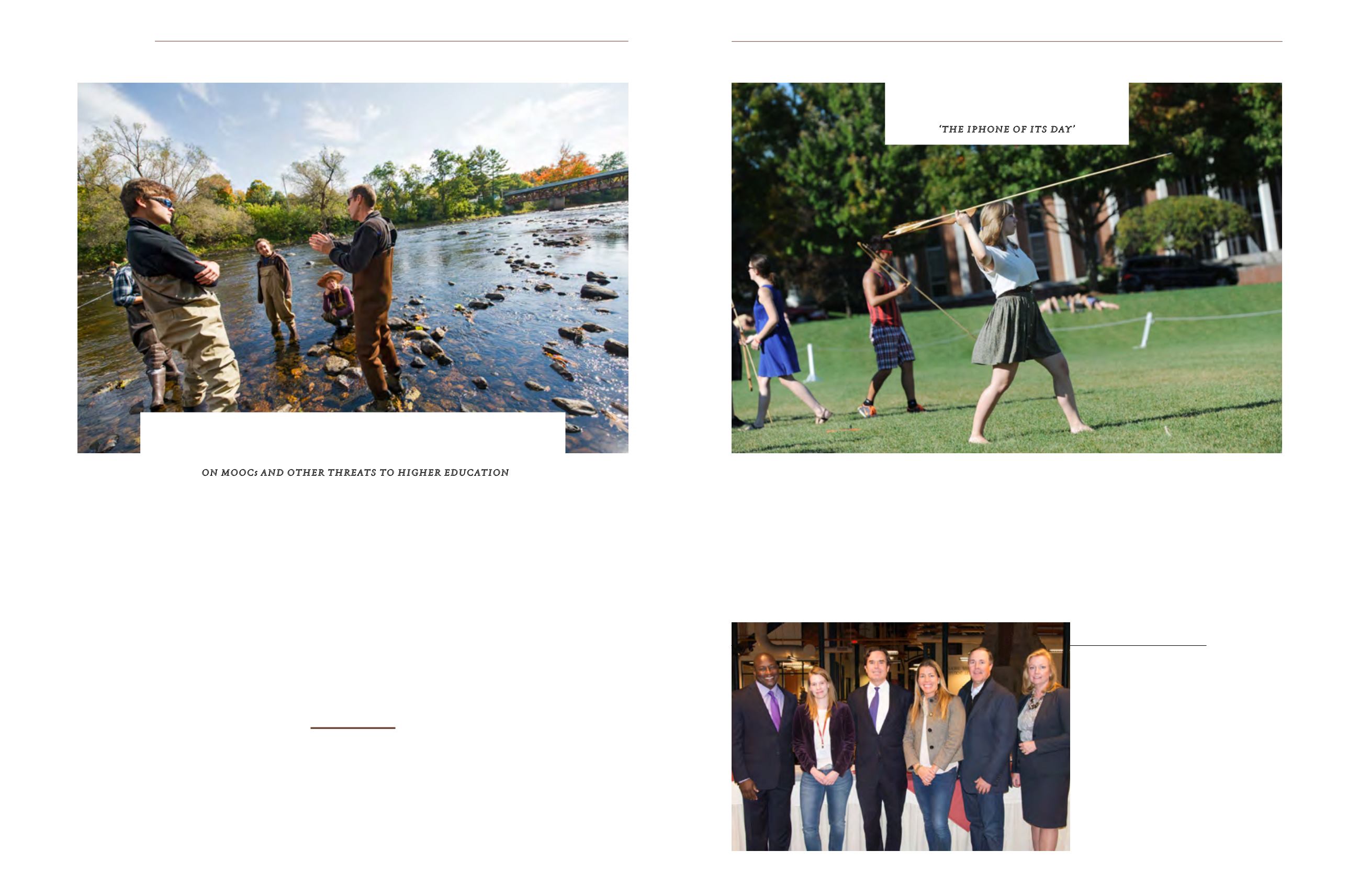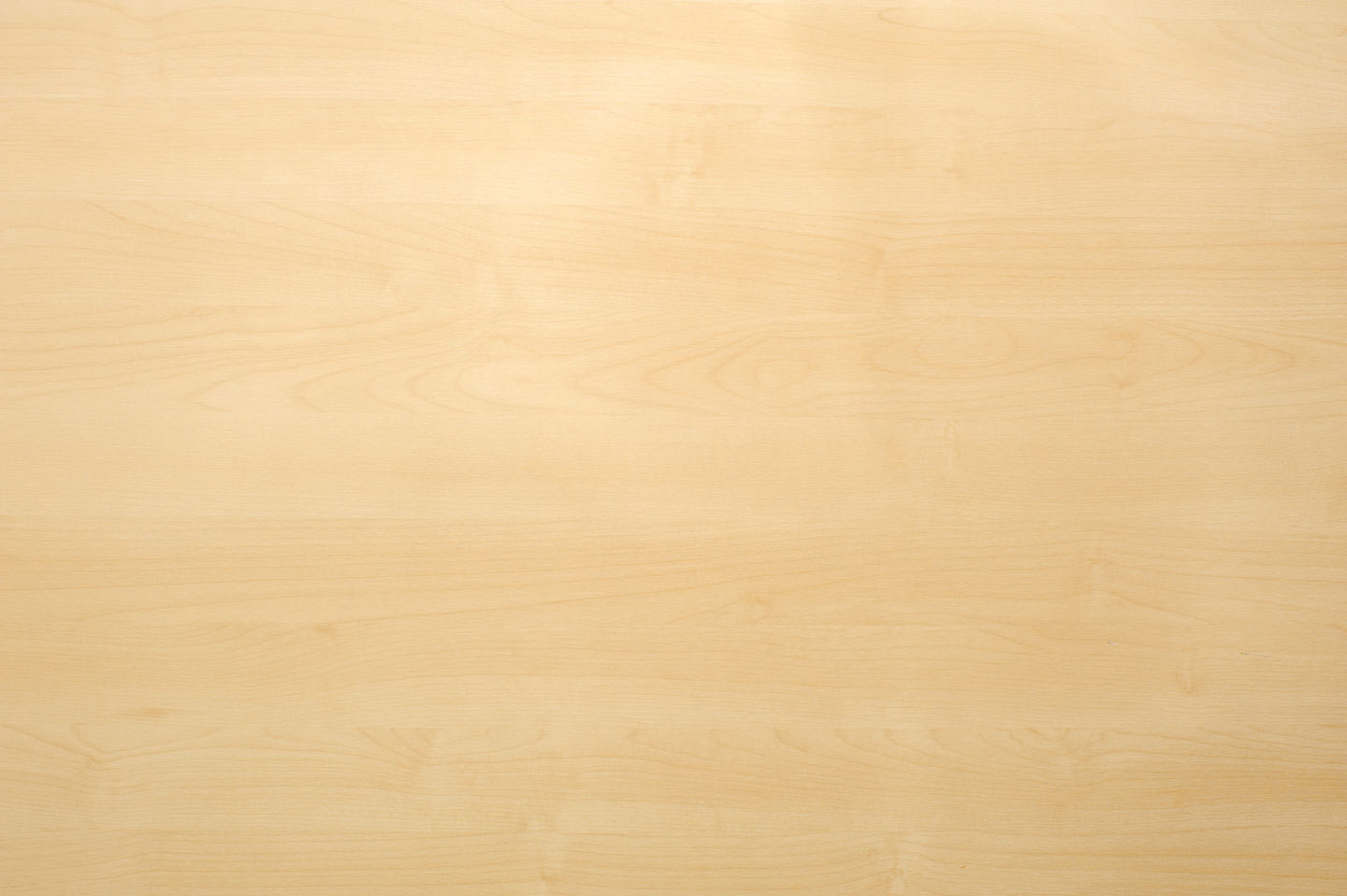

6
7
on campus
st. lawrence university magazine | winter 2015
education.” Paradoxically, he
observed, people from both
sides of the political aisle
are complaining that the
country needs better-educated
people in the work force.
Delbanco explained that
the rising popularity of
MOOCs, or Massive Open
Online Courses, is one
ith the
increasing
cost of col-
lege tuition,
the struggle to secure jobs
and the belief that private
colleges are “pampered play-
grounds for young adults
to date and party,” Andrew
Delbanco told a campus au-
dience that many people are
wondering about the future
of higher education.
This year’s Hays and
Margaret Crimmel
Colloquium on Liberal
Arts speaker, Delbanco is
a professor at Columbia
University and author of
College: What it Was, Is and
Should Be.
In his lecture,
“What is College For?” he
said that in America today,
“there is a massive public
disinvestment in higher
‘What is College For?’
Atlatl Battle
on moocs and other threats to higher education
‘ The iPhone of its day ’
W
hat’s how Visiting Assistant Professor of Anthropol-
ogy Elizabeth Paris describes the atlatl, a device that
more than 17,000 years ago helped humans become
better hunters. On a warm Family Weekend last
fall, the inaugural Atlatl Battle between the St. Lawrence and
SUNY Potsdam anthropology departments on the St. Lawrence
Quad helped students become better acquainted.
The wooden instrument, here being wielded by Noelle Reilly
’
15, functions as a lever that allows the user to propel a spear
By Laura Stasi ’15
of the biggest challenges
colleges face today. By
taking courses online, he
explained, people of all ages
can acquire an education for
a cheaper price and at their
own speed.
But, he argued, while
some people fear college will
become a thing of the past,
it is “nearly impossible
to capture the essence of
humanity classes through
a computer.” His reasons
why residential higher
education is invaluable and
indispensable resonated
with his audience:
•
Adolescents deserve
the chance to reflect on
who they are and who they
want to be.
•
Students have a great
deal to learn from one
another, making residen-
tial schools all the more
valuable because of the
constant connection be-
tween individuals.
•
College classrooms
are
the best place to practice de-
mocracy and share opinions.
“While some people fear college
will become a thing of the past, it is
nearly impossible to capture
the essence of humanity classes
through a computer.
”
Andrew Delbanco
Six Laurentians representing a wide array
of endeavors returned to campus last fall
as Laurentians in Residence. From left
are Noel Williams
’
88, Amanda McKay
’
02, Frank O
’
Keefe
’
82, Sarah Horton
Pike
’
99, John Trimble
’
86 and Colleen
Dolan Baldwin P
’
16.
The once-a-semester
program is a cooperative effort among
Career Services, University Advancement
and the Student Alumni Association
.
It is sponsored in part by the Alumni
Executive Council. For more, please
visit
www.stlawu.edu/career-services/laurentians-residence.
faster and farther than with an unaided arm, a technologi-
cal revolution that resulted in a more successful hunt. On
campus, the targets were hay bales.
At the end of the day, St. Lawrence was declared the
first winner of the Atlatl Battle trophy. “This could be an-
other North Country rivalry,” Timothy Messner, a faculty
member in SUNY Potsdam’s anthropology department,
told a
Watertown Daily Times
reporter. “Move over, hockey:
here comes the atlatl.”
T
Laurentians in Residence,
Fall 2014 Edition



















